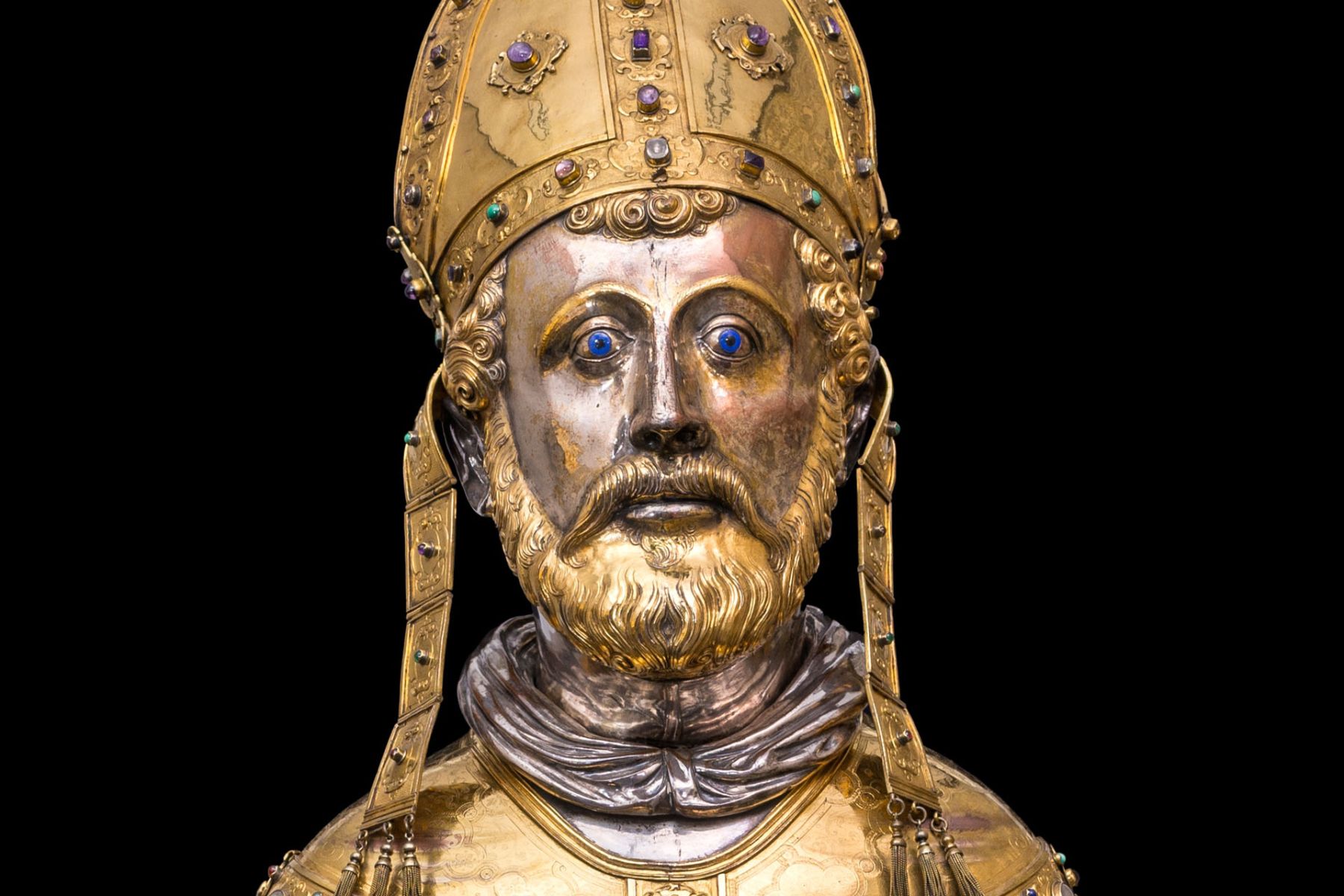Servatius
Saint Servatius was the last bishop of Tongeren and the first bishop of Maastricht. He died in Maastricht in the year 384 AD.
Saint Servatius and Armenia
There are few sources from the time of Servatius. According to a legend, he was born in Armenia and was a distant second cousin of Jesus. The Kingdom of Armenia (or Greater Armenia), which existed from 190 BC. to 428 AD, at its peak contained an area between the Mediterranean and Caspian Seas. Armenia was the first country to adopt Christianity as the state religion in 301 and the oldest cathedral in the world is in Etsjmiadzin.
The oldest record of Saint Servatius's Armenian descent dates back to the 11th century. This would be based on older, lost sources. However, his suspected link with Armenia does explain the many different Servaas-related objects and relics that come from that country.
Starting as early as the sixth century, several memorial churches were built above his tomb, culminating in the basilica as we know it today. In time, Servatius’ remains were elevated and placed in impressive reliquaries.
The Bust of Servatius
The Bust of Saint Servatius is a gilded reliquary, containing parts of the saint’s skull.
This bust was made in the 16th century and consists of gilded and silver-plated copper, set with precious stones. The famous Duke of Parma, the Spanish general Alexander Farnese, ordered it after an earlier bust, dating from the Middle Ages, was largely destroyed by his own troops during the looting of Maastricht in 1579.
The pedestal dates from the early 20th century and shows, among other things, 8 reliefs depicting the legends of Servatius. The original mediaeval reliefs are part of the collection of Hamburg’s Museum für Kunst und Gewerbe.

The Shrine of Servatius
The Shrine of Saint Servatius is a highlight of Mosan metalwork and was made around 1170 - 1195. The shrine’s gilded copper oak core is decorated with enamel and semi-precious stones. This exceptional reliquary contains the remains of the holy bishops Servatius, Monulphus, Gondulphus and Martinus of Tongeren.

The shrine was originally flanked by four reliquary tables, placed in a casing behind the altar in the choir. The (partly disappeared) paintings on the choir’s walls and vaults also featured the Apocalyptic theme. As such, the shrine, the four reliquary tables and the choir paintings formed a thematic unity.
The twelfth century was a time of great social and political unrest. The struggle between the Pope and the Emperor over supreme authority on earth led to the belief that the end times were near. This feeling is expressed in this ensemble by the chapter of St. Servatius. However, the shrine was also a symbol of hope that the intercession of Saint Servatius would create order in these chaotic times.





